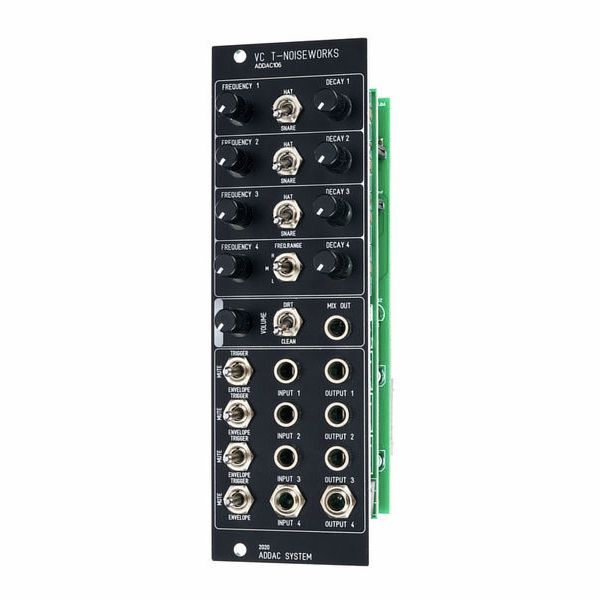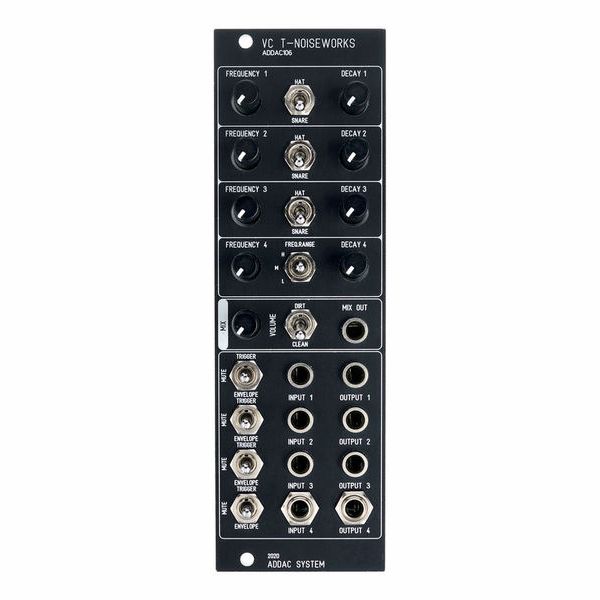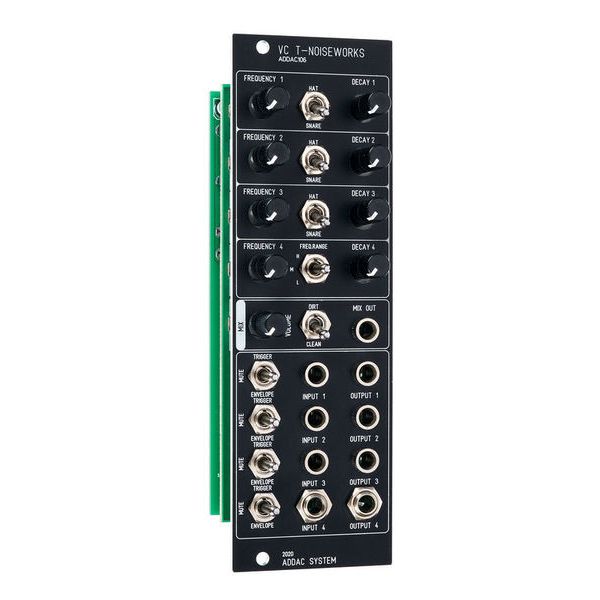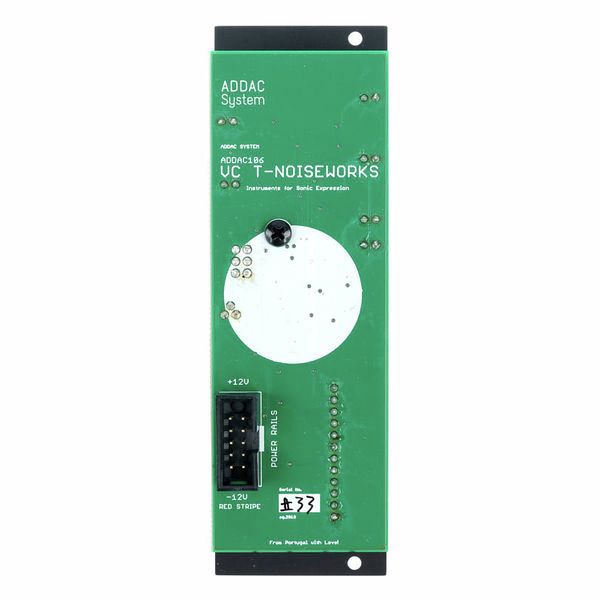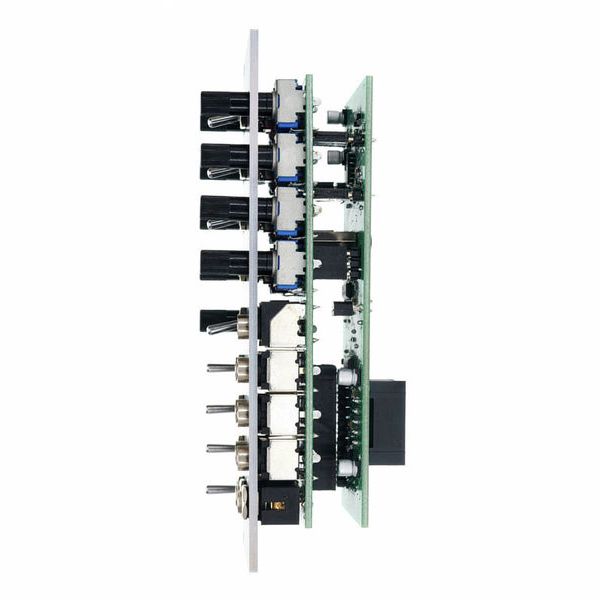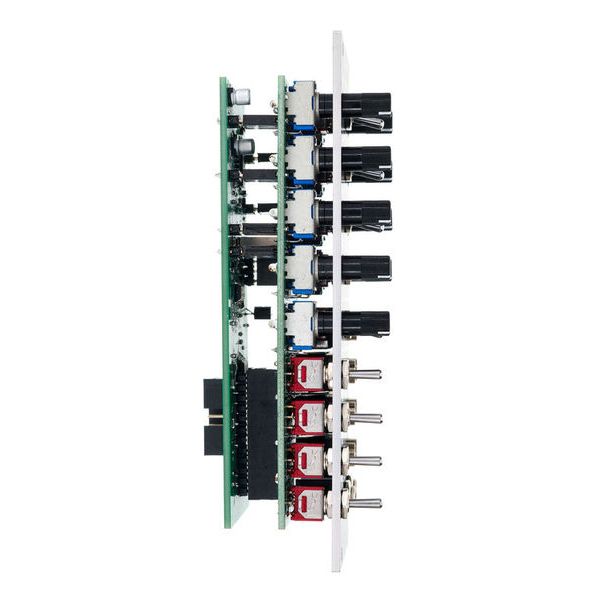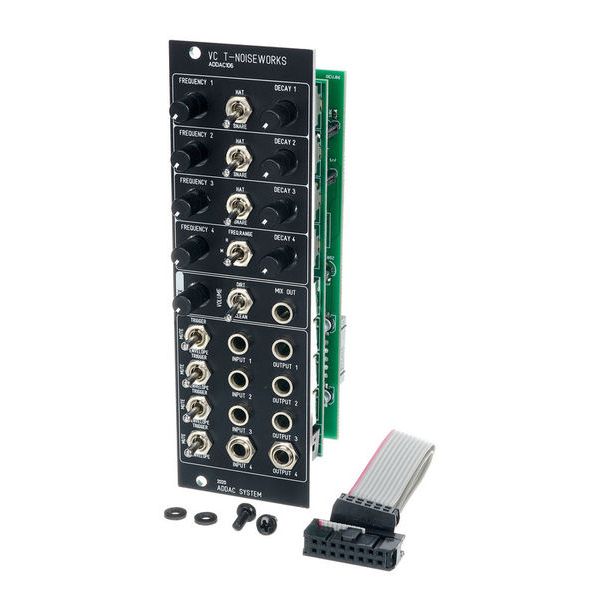The T-Noiseworks is a mysterious module, with not much currently being said about it on the Internet. It offers four noise voices which can be pitched, sounding a bit like pink noise going through a bandpass filter.
The four voices are tuned slightly differently. The first voice is very resonant and nasal, the middle two have a much lighter touch, and the last voice is much deeper than the others. The first three have "hat/snare" switches, which activates a high-pass filter, while the last one reads L/M/H. If you've watched the DivKid video about the related ADDAC T-Networks video, you know this stands for low / mod / high, with the middle output being much more resonant. In this case, it's well suited for kicks. You can get some nice sub frequencies out of this last output on the low setting too.
The noise can be quite dirty and crackly sounding, especially using the mod mode on the fourth output for kicks. For this reason, I usually take the mix out through a low-pass filter to clean up some of the high end.
You can feed it trigs or CV through the inputs. The switches next to the input jacks will let you select what you're feeding it, but also work as mutes, which is really useful when dealing with so many voices. While the manual suggests putting audio through it, I had trouble getting a good result with this, but it might only be responding to positive voltage.
According to the diagram in the manual, all four noise channels share the same noise source, so they are really fun to layer, since you can get nice moving rhythms using polymeters, then taking the mix out, without having to use an additional VCA for velocity. It would pair great with a Euclidean rhythm generator. The mix out has two modes, normal and drive, which again imparts a quite different character to the kick.
All in all I bought this only having seen low-res videos online. Still, it seemed promising, given that I was looking for a quick and inexpensive way to get a lot of percussion into my system (partially a drum rack). I was pleasantly surprised with how it worked out. I expected something that was akin to putting white noise through a VCA with a short envelope, but it's really much more than that. I'd been using the white noise technique for hats already, but found it actually paired really nicely with the Noiseworks, which can offer a much more aggressive resonant low-to-midrange noise voice.
Don't be fooled by the Future Music review linked here - this doesn't really resemble a DFAM. Instead, the T-Noiseworks is a percussive noise source that works well with filters, trig generators, and effects, and is fun and satisfying, provided you have enough outputs to trigger it!


